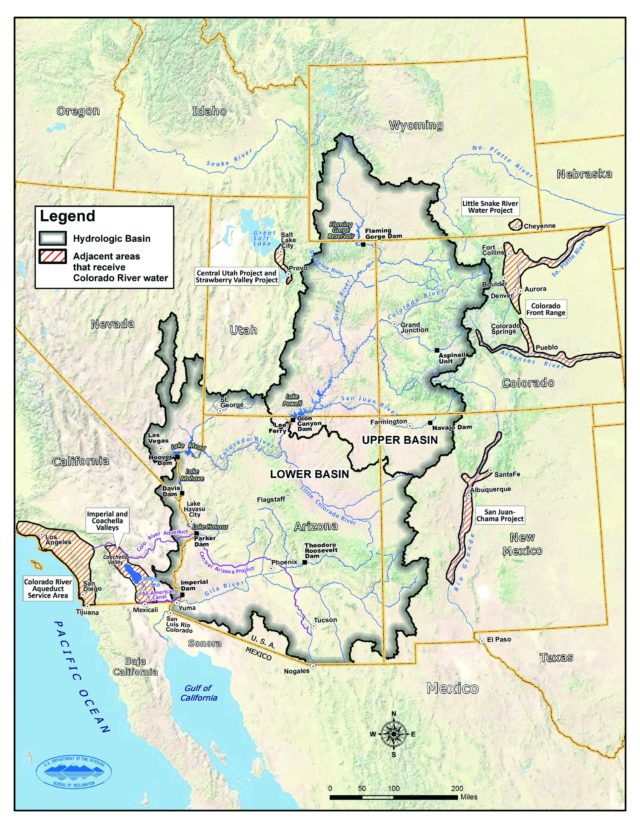The Colorado River is one of the most significant major rivers in the Southwest U.S.
The Colorado runs 1,450 miles through seven U.S. states and two in Mexico. Between its headwaters in Wyoming and Colorado and its final diversion point at Morelos Dam at the U.S.-Mexico border, the Colorado supplies water to over 40 million people in both countries.

Numerous transbasin diversions pump water outside of the natural river basin to supply cities like Denver, Albuquerque, Salt Lake City, and Los Angeles. The river once connected with the Sea of Cortez, creating a vast river delta, but due to the demands of its users no longer meets the sea.
While the Colorado is a regional river, its impact is national. The Colorado irrigates agricultural lands that produce 15% of U.S. produce and over 80% of our winter vegetables—meaning wherever we live, we eat from the Colorado River.
But increasingly we are taxing the capacity of the Colorado to provide for the land and its people. The Bureau of Reclamation estimates a significant deficit in water supply and demand in the Colorado River Basin by 2060 due to drought, climate change, and development. Some believe the deficit will be addressed by removing water from agriculture, a trend already too common in this region.
But NYFC believes there’s a better way forward.